Well this is embarrassing...
I've written blog post after blog post about enhacing DnD exploration, the "forgotten pillar" of 5e...
And FINALLY I am getting to hex crawls!
Hell, I wrote THREE posts about long distance travel first, when hex crawls are without a shadow of a doubt the BEST form of travel-based TTRPG adventure there is!
It's about dayum time...
Anyways, this blog post is me tossing my hat in the ring for "guide to 5e hexcrawls."
It covers everything from making the map, hexcrawl structure, filling the hexes, and hexcrawl rules and mechanics for your players so the adventure stays within players' control and stays fun.
Blog Table of Contents
- What is a Hex Crawl?
- Hex Crawls Focus on Exploration
- Making the Hex Crawl Map
- DM's Filling in a Hex Crawl Map
- Players Exploring the Hexes
- The Best Hex Crawl Adventures

What Is a Hex Crawl?
A hex crawl is a TTRPG adventure focused on an adventuring party moving across large, unexplored distances. The land is divided into hexagons, the abstraction of the hex providing structure for gameplay. As the players enter a new hex they discover landmarks, monsters, NPCs, and treasure.
Sometimes players can see all of the terrain on the map, but have no idea what is in each hex. However, if the map is initially hidden, the terrain is revealed alongside other features as players enter the hex. Meanwhile, from the GM's side, the map is littered with everything even remotely important. The GM has the option of providing clues to create a cohesive narrative (more railroading) or can keep it a sandbox (the literal opposite of railroading).
AT: Six diverse adventurers on a sunlit, hexagon-mapped fantasy landscape ready for a journey.

5e Hex Crawls Focus on Exploration
There are three pillars of D&D 5e: social, combat, and exploration:
- The social pillar comes naturally; you hang out with friends and act, which is intuitive.
- The combat pillar is the "favorite child"; it is what has traditionally drawn the majority of players to the game and is supported by pages upon pages of mechanics.
- But exploration is both A) not intuitive and B) is not supported by lots of rules or mechanics.
For this reason, it is considered the "forgotten pillar."
That saaaaaid...
The hex crawl is THE exploration gameplay mechanic.
Granted, these mechanics were not provided by Wizards of the Coast for fifth edition until the adventure module Tomb of Annihilation (more on that later on), and even then they provided the bare minimum, which is a cryin' shame.
Thankfully, hex crawls are such a staple of tabletop RPGs that there are online resources GALOR backed by decades of collective experience. In fact, many older players who learned from previous editions feel a hex crawl is THE way to play D&D!
But I digress...
The definition I gave for exploration in my initial exploration post was this: "Exploration is seeking, investigating, and/or wandering out of a desire to discover something." It is all about moving from the known to the unknown. You move, climb, dig, and think your way into a discovery, motivated by fear or curiosity (I'll talk about this more when it comes to FILLING your hexes).
And while the focus of exploration is not movement (it is NOT synonymous with travel), the more you can traverse an environment, the more you can explore it! The main difference is that a hex crawl is an indirect form of travel. In the modern day, travel is usually associated with moving from point A to point B, like when you fly on a vacation or go to work. But a hex crawl is more like moving from point A... to point 4... to point *%^... to point "GAAAAAAH"... to point "uh oh"... to point B.
A hex crawl is exploration because you move through and discover an active environment.
Furthermore, as stated in my post on better 5e chase rules, you know something belongs to the exploration pillar when the environment is more of a character than a setting. And in a hex crawl, environment does not just passively wait for the players to discover the secrets it hides; it acts upon the players! If the players hex crawl through a single environment long enough, say a particular forest or mountain range, it WILL take on a personality!

Like the image? Try it out here.
Making Hex Crawl Map
Now that we've established the basics of a hex crawl, let's tackle step one: making a map!
NOTE: Before I go any further, this post is NOT about the geography of a fantasy map. I am no map maker or geologist, and I believe you need to have that knowledge in order to create an immersive world that doesn't create cognitive dissonance anytime a player glances at it (def a pet peeve of mine... read more here).
But before you start, you need to ask some basic questions:
- How long is the campaign?
- Does it take place in a single location?
- How large is that location: county, nation, or continent?
- Does it take place in a single ecosystem, a few, or many?
- How much do you want weather and survival to play a role?
Based on how you answer those questions, you can create a hex crawl for hunting an orc tribe in the summer through the forest outside of town, where player characters become local heroes...
Or an epic quest across the vast expanses of the Beastlands in order to save the world from sure destruction, where the players end the campaign with their third character (cuz two died horrific deaths) transformed into a high level demi-gods...
VERY different campaigns, eh?
However, the most important question is: how WILD is the land?
This is important because...
Hex crawls work way, way better in unexplored wilderness.
Because when you try to run a hex crawl within a well-established kingdom, you quickly run into problems.
- Where is the sense of danger when the Order of the Gauntlet is stationed a few miles away?
- Where is the threat of starvation when there is a tavern up the road?
- How can there be crazy monsters when the farms thrive?
- And how can players get lost when they are following the king's road?
- In other words... what is the point of exploring an area that is well known, well mapped, and well maintained?!?
So needless to say, your dnd hex crawl adventure should take place in the wilderness, but just how WILD it feels is up to you.
There can be threats literally every step or barren expanses as far as the eye can see. It can be filled with the ruins of an ancient civilization or be so untouched that ancient magic as gone uncontested since the dawn of time. Rival factions can rove the waste or the land can be so littered with mythical monsters that few DARE venture into its depths.
We will talk about HOW you fill your hexes in a little bit, but just like the spicy level at a Thai restaurant, you first have to know what level of wild you and your players can handle!

Next Steps to Making Your Hex Map
1) Number Each Hex
The collective wisdom of the internet is conclusive: get a numbered grid. Especially if you have more than a few dozen hexes or a map so big you need to zoom in. There are two popular ways to number them.
1) Starting at the top and moving to the right, number each hex, going back to the first, left hand hex on the next row once you finish the previous row. It's numbering like you would read, left to right.
2) Each has two sets of numbers: "XX" for the number on the column and "YY" for the row number. Horizontal numbers increase left to right; vertical numbers increase top to bottom (learn more here).
2) Create the Plot
Even if the players are rushing head first into off-the-rails nonsense, you still need to know what enemies, monsters, factions, etc. they will run into, and what their motivations are. Cuz truth be told, even your wackiest player will not enjoy true random b*ll sh%t.
(Remember: narratives are only fun when the characters make impactful decisions. Whether or not there is no overarching plot to guide their actions, there still need to be pre-existing stories the players can choose to join and impact).
So go through the steps like you would any other Dungeons and Dragons adventure: create a BBEG... give him a goal... factions and minions... the whole sha-bang. And how the region is impacted by their presence.
But once you have all the pieces in place... STOP. Do not create a "plot flow" or anything. The benefit of a 5e hex crawl is that you don't have to spell out HOW players get from beginning to end!
3) Plan Your Time Accordingly
Even if you are using a small hex grid... 10x10... that is still 100 hexes you will need to fill out! And whether you fill out your hexes all at once or a little bit each week, that will take a lot of time. But don't worry, it won't take forever because you can just use the basics. Initially filling your hexes does not demand the same attention to detail as painting a mini.
Jot down a sentence or two of what is in the area or, my personal preference, add an icon that refers to a key. As players approach you can flesh out more detail. And since you will have done so much prep ahead of time, you will have more than enough background information to think on your feet and successfully improvise!

"What is the Ideal Hex Size?"
Great question. Short Answer: 6 miles across. And no that is not up for debate... it is THE right answer. The Hydra's Grotto wrote a famous piece arguing for its superiority and outlining its best features:
Long answer: oh boy...
So first of all, as long as you are using whole numbers, there is no wrong scale. It all depends on your campaign and map. For example, I am running The Forge of Fury right now, and I quickly realized that the valley would be ENORMOUS even if I reduced each hex to 1 mile across. But if you are hex gridding a continent, then the hex grid will cease to be useful if the hexes are anything less than 50 miles.
That said...
If you are doing a "typical" hex crawl adventure, then you want 6 miles.
And here is why:
Easy Measurements: You notice in the above image how a 6 mile hex is 6 miles side to side, 7 vertex to vertex, and 3.5 on the side? Yeah, the measurements of 10 mile, 3 mile, and 5 mile are numbers with tons of decimal points. No other hex size breaks down as cleanly as the 6 mile hex.
Practical Realism: If someone is moving across flat terrain in a relatively straight line, then 24 miles is what a very fit person (ex: soldier) with a full pack can travel in a day. Furthermore, cattle or horses carrying heavy cargo could only walk about 12-18 miles a day. All of these measurements are divisible by 6.
Aligns with PHB: All the travel movement speeds on page 182 of the Player's Handbook are divisible by 6.

Plenty to Explore: Navigating within 6 miles of wilderness... looking for something or hunting... is about 31.8 square miles of hex. That is a LOT of ground to cover. It is large enough that a DnD party would spend at least an entire adventuring day looking for something in that hex if they had a clue as where to look.
Adjusts for Difficulty: Wilderness travel that involves difficult terrain and elevation gain is STRENUOUS... and as a result, people move slower. Same goes for if the party is overly encumbered by gear, or has to move slowly for a cart fully laden with treasure.
For example, let's say the party is crossing 2 hexes with steep mountains, 12 miles in all. The DM can say they are moving at 2/3, 1/2, 1/3, or 1/6 speed... and it will all still neatly divide into whole numbers:
- Full speed... 2 days
- 2/3 speed... 3 days
- 1/2 speed... 4 days
- 1/3 speed... 6 days
- 1/6 speed... 12 days
Line of Sight: Human's uninterrupted line of sight is about 3 miles, so adventurers standing in the center of the hex or climbing a tree in the center should be able to make a basic survey of the entire hex, and form awareness of what is in the surrounding hexes (so they can make an educated decision of where to head next).
Matches Personal Experience: Finally... many of the most popular hikes people take are around 6 miles round trip. When you tell players it is a 6 mile hex, not only does it have the above benefits, but most of your players will be able to remember a hike they took for a visual reference of scale.

How Fast Can Players Move Through a Hex on a Hexmap?
It was interesting watching videos and canvassing comments on this topic (especially this one). On the one hand, 24 miles across wilderness with a full pack is STANDARD for U.S. infantrymen. On the other hand... medieval people were less physically fit and had worse nutrition. On the other hand, its fantasy... why can't they eat well?!
In my opinion, the movement speed of characters depends on the following:
- How physically fit are the characters?
- How familiar are they with the terrain?
- How difficult is the geography?
- Do they have pack animals with them?
- Are they stopping to talk to locals?
- Are they looking for anything hidden?
- Are they hunting, fishing, or foraging?
In my opinion it comes down to the physical fitness of the player characters. The adventuring party is probably full of clerics and bards who can't run a 5 minute mile like the monk or fighter. For many of them, 24 miles in a single day would require several "Shape Water" cantrips to create ice packs and "Aleve potions" on top of an undisturbed long rest!
One suggestion is, for everything that slows them down, slow their speed by 1/6. Another is to leave it up to GM discretion; consider all the things slowing them down and determine if they are moving at 1/2 or 1/3 speed.

DM's Filling in a Hex Crawl Map
Onto the fun part!
- You have your map...
- And answered necessary logistical problems...
- The players are going to EXPLORE your hex map for session after session...
Now you need to give them something to DISCOVER.
As I mentioned in this blog post, the feeling of discovery is WHY people explore.
Please go read it... it will help make the rest of this post make so much more sense!
...
Sorry...
That was too polite...
I'm not asking...
STOP SCROLLING and go read it now.
...
...
...
I'm not kidding around...
I just spent an hour trying to reword it before realizing that having you read it would be way, way better than an incomplete summary
Click the link below to read it:

Read "How Curiosity, Discovery, and Wonder Make Exploration Unique in D&D 5e"
...
...
...
Oh, I'm sorry, were you hoping I would summarize it here with bullet points?
Nope.
Why?
CUZ I WANT YOU TO READ IT
I'm doubling down on my stubbornness.
...
...
...
(I ain't playin'; go read it)
...
...
...
Ok.
I'm going to assume you went and read it...
Jk I KNOW you didn't!
GO READ IT!!!!
...
...
...

Ok, for reals, here is the takeaway for hex crawls:
Hexcrawling is about discoveries... not encounters.
Do players enjoy a hexcrawl play because it provides and endless stream of combat encounters?
Nope. In fact, that is a problem a lot of people have with hexcrawl systems!
The truth is...
They enjoy hexcrawling because it provides endless things to DISCOVER.
They look at a hidden and unknown map, and their brains run WILD with possibilities.
Admittedly, more often then not, the "things" are going to find are obstacles or threats they have to overcome. The big, good thing that tempts them to enter danger in the first place is at the end of the road. Which makes sense:
- For the reward to feel earned, they need to conquer.
- And for the journey to be interesting, there needs to be conflicts.
- And for the risks to be worth it, there needs to be legitimate hope for a great prize.
So before I talk about the stuff you put in the hexes, there is one thing you cannot forget...
Whatever you put in the hexes, make it SATISFYING to UNVEIL and/or RESOLVE!!!
Yes, they will have fun talking to an ancient monster they just awoke after a century of rest. And yes, they will have fun fighting off a pack of ghost dire wolves. But those are fun because the SOCIAL pillar is fun, and the COMBAT pillar is fun...
What makes the EXPLORATION part fun is the DISCOVERY part. And each discovery they make, the unknown becomes known, and that process relieves anxiety, satisfies curiosity, or evokes wonder... which feels GOOD and is FUN.
How do you do that?
Well, if you are asking that, then YOU DIDN'T READ THE DISCOVERY AND EXPLORATION BLOG POST LIKE I ASKED!!!
It details how to play with your players' emotions so the discovery has an immensely entertaining payoff.

WHAT to Fill the Hexes With
Alright... enough delay... let's make like a bunny and hop to it.
First of all, your hexes should have a variety of different terrain types. Even if the whole map is one ecosystem, there should be a variety within that ecosystem. If it is a huge adventure and the edge of your map is a new continent on each side, then each hex should be a different ecosystem entirely.
Second, there needs to be "adventure sites" for your players to discover. These can be detailed descriptions or simple notes for you to fill out later. They can be in an exact location players need to find within the hex, or just something they stumble upon. There should be at least one discoverable thing or adventure site within a day of travel for the party.
Here's a checklist of stuff to consider scattering throughout your map:
Treasure: Valuables. Gems. Priceless artifacts. Cold hard cash. The players have every incentive to plunge into danger, but you need to give the adventurers in the imaginary game world a reason to risk their lives. And no... this cannot be "the friends they made along the way" (that is a just a touching bonus!).
Landmarks: This can be as unmistakable as Half Dome in Yosemite or the Eiffel Tower, or as simple as a peaceful picturesque pond. If you have ever gone on a 6 mile hike, there is always SOMETHING that stands out. Something that, if you return to the trail, makes you think to yourself "Oh, yeah, I remember this tree."
Natural Hazards: Nature is wild and full of dangers. Stuff like quicksand, chasms, and groves of poisonous plants. And ever forget how deadly fall damage is in 5e!
Beasts: In most fantasy settings, the world is not just NPCs and monsters; there are normal animals too. In the Monster Manual they are classified as beasts. And while a dragon is scary, so is a horde of hyper-violent possums with rabies.
Factions: Unless you want your players exploring the "beyond beyond," like, the farthest reaches of the world where no one has gone before, there are going to be other humanoids there. They could be a mix of indigenous groups (ex: orc tribe), foreigners (ex: Dwarven mining colony), fellow adventurers (ex: Harpers), and invaders (ex: drow slavers).
Strongholds: Speaking of factions, each of them should have at least one stronghold. And the closer the players get to that stronghold, the more frequently the encounters and discoveries relating to that faction should be. Once they reach the stronghold, the hex crawl can pause for a dungeon crawl.
Sanctuaries: If the wilderness is very difficult for players to survive in, throw them a bone and sprinkle some sanctuaries across the map. These can be places where they rest without fear, fully recover from exhaustion, gain HP, or even level up! Regardless, your players will be ECSTATIC to stumble upon one.
Secrets: There should be stuff in the hex map that is completely unknown to the civilized world, or at least is only rumored. Long lost tombs, forgotten monsters, and evidence of inconvenient truths that change everything for people back home...
Clues: Speaking of secrets, you can have players stumble into them unexpectedly. But you can also have them discover clues that spark their curiosity. These can be clear as day or cryptic and allegorical. The clues can be scattered or increase the closer players get to the secret. And they can be about fabled long lost treasure or evidence that a bear with bad bowels passed by. Loooooots of options.
Monsters: I mean... duh. I personally hold to the Legend of Zelda rules rather than Skyrim rules; the monsters do not level up with them. Rather, they could, at any moment, run into a monster that will obliterate them in a single round (give ample warning if you do this tho).
Magic Bullshit: Portals... magic items... areas that have ephemeral magical effects or impose conditions like memory loss or change alignment. If its a fantasy game, then make it fantastical!
Random Bullshit: Once you have filled your hex with all this stuff, throw in some wild cards. Stuff that "doesn't belong" here or "is completely weird" there. Keep your players on their toes!
Once you have filled your hex map with these such key things, it will feel like exactly that: FILLED. Bursting at the seems. Teeming with life and possibility. And if you want, tell your players that the map is filled with all these categories! It will amp up their anticipation.

"Do I Need to Fill Every Hex?"
There are, kind of, two answers to this question...
On the one hand, there are some that believe that there should be something for players to discover in literally every... single... hex... on... the ... map. After all, what is the point of exploring a map if there isn't stuff in there to discover?! This also works well with the philosophy that if players roll there must ALWAYS be a chance of success. So if they roll Perception checks to see what is in a hex, there must be something for them to perceive.
On the other hand, there are those that believe not every hex has to have something. After all, everyone has walked along a coastline and NOT seen dolphins... or a pack of wolves... or a great stag... or a secret cave. Lots of places in the world don't have much going on, and that is ok! It makes the discoveries that much more exciting!
In other words... it's up to you! Personally, I fill some of the hexes, but use random tables for the others. The result is that some of the hexes are empty, but they never go very far without running into SOMETHING.
Speaking of random tables...

HOW to Fill the Hexes
As far as I know, there are three ways to determine what-goes-where in each hex:
- Fill in the hexes manually
- Roll on random encounter tables when players enter a hex for the first time
- A combination of the two
Filling in hexes manually allows the DM more control over what the adventure looks like... but it takes the already-significant amount of prep world and skyrockets it. It is the best choice when you are playing a very small hex adventure (less than 10x10).
Rolling on a random table is kind of a double edged sword. On the one hand it saves you from having to fill out hundreds of hexes and allows everyone at the table (DM included) to hold their breath in anticipation of what awaits them in the next hex. The more random encounters that happen, the more the world is fleshed out.
On the other hand, it also means you have to create random tables for all the "WHAT" categories. And if you do not create REALLY good random tables, then the adventure can quickly become tedious and boring. Plus, it forces the DM to be quick to think on their feet; you must, must, must, MUST put the random encounters in some sort of context, otherwise they will feel meaningless to your players.
Personally, I believe a mixed approach is best. For Tomb of Annihilation, I spent a significant amount of time moving locations around the map, adding strong holds, and placing magic items and locations in specific places on the map. However, I left environmental effects, beasts, and monsters to random tables.

How to Run a Hex Crawl
Wanna hear some GREAT news?
You want to know the best thing about running a hex crawl campaign?
Once you, the DM, make the map, and fill in the hexes...
YOU CAN SIT BACK AND RELAX.
The downside of a hex crawl adventure is how it is so, so, so much work up front. But once you have the map filled out, then the majority of the prep work as a DM is done (this is especially true if you choose to fill out each individual hex).
Granted, you still have work to do. Even if you are filling in all the hexes ahead of time, you have to flesh out the details. And if you are using random tables, you have to start making them all fit together to create a cohesive adventuring world.
But...
- You know where your players are going
- You know how fast they can move
- You know how much can be covered in a single session
Each session is more predictable for a DM, which makes prepping for each session less time consuming and less stressful. Compared to planning for WHO KNOWS WHAT, it will feel like a walk in the park.
I mean, look at that image above for Devon Chulick... you see how relaxed that guy is? That can be you: sippin' on a whiskey sour in a camp collar shirt while your party bites their nails about which hex to explore next.

Players Exploring the Hexes
Hexes are filled... players have assembled... let the adventures begin!
Except... how DO they adventure, exactly?
I mean, they don't just enter hex and receive all the information about it... right?
Of course not!
Every time players enter a hex, there are things the DM has to do and things the players have to do.
DM Task 1: Balancing Exploration with Narration
If you are using a smaller hex map, or one where each hex is contains different terrain, then this should be no problem. But what if you are doing a hex crawl through the plane of fire? Even the elemental planes get boring when narration is just a cycle of, "You walk for four hours in amidst scorching badlands with volcanic mountains in the distance" for hex after hex after hex.
Your descriptions need to differentiate one hex after another.
You can do this by alluding to what is in the area. If there is a ruined tower guarded by skeletons, you can talk about necrotic energy emanating from bones they find on the ground.
But if there isn't anything interesting, you can still vary your description to keep it engaging. Some hexes are dominated by different varieties of trees, and others different views on the horizon. And any wilderness is going to have natural oddities—a tree with particularly twisted branches, a stream with extra colorful fish, or simply the sweet smell of wildflowers in the sunny meadow.

DM Task 2 (OPTIONAL): Weather
While many can make an argument that tracking weather is tedious or boring, unless your "wilderness" is similar to the Shire, then there is going to be weather.
Remember: part of what makes exploring the wilds exciting is SURVIVING THE ELEMENTS. How can they survive the elements if there are no elements to speak of?!
I personally LOVE this TTRPG fantasy weather generator. It allows you to adjust for climate and season, and add more or less natural and magical variation. Plus, it calculates the weather, day and night, for THIRTY DAYS... telling you WHEN the bad weather starts, how long it lasts, and its impact on player character abilities.
But I also wrote a whole blog post about "DnD 5e weather"... read it here if you want to learn more about using it in your hex crawls.

Player Task #1: Perception Checks
When players are exploring, they are looking around. And not just with their eyes: they are listening for creatures, smelling for something rotten, feeling for a magical breeze, and sensing angry spirits. They are on high alert, searching their environment by sensing it.
In other words, when running a hex crawl, ALL THE PLAYERS are scouts.
So rather than having every single player roll Perception checks, and making the Wisdom ability score super over powered for a hex crawl adventure, I suggest using the following skills for players to "perceive" their surroundings as they explore a hex:
- Navigation (avoid getting lost - Intelligence save)
- Scout (see what's ahead - Perception check)
- Forage (resupply as you walk - Survival check)
- Nature (how are the animals/plants acting - Nature check)
- Arcana (are there magical beings or forces around - Arcana Check)
- Religion (are there spirits, cultists, or divine beings present - Religion check)
- Weather (determine how the weather will change - Survival Check)
- Morale (see how anyone in the party or NPCs are doing - Insight Check)
There is even something on there for the charismatic musician!

Player Task #2 (OPTIONAL): Survival Checks
In my opinion, it is SURVIVAL that separates traveling in dangerous territory from taking a road trip. So if players are engaging in wilderness exploration, then I believe you should have them regularly rolling to keep their bodies, minds, and spirits up so they can survive their adventure.
The most obvious way to do this is to have players track their supplies like they do their cash. And if you want a campaign of gritty realism... or are playing with a bunch of actual/wannabe accountants... then I suggest you attempt that method of measuring survival.
But for a lot of players, tracking all rations and managing all the supplies is a chore, especially when you are considering carrying capacity.
That is why I created a "Survival Meter" Mechanic.
It allows survival encounters/scenes to naturally develop based on player rolls without all the tedious tool management. You can read all about it here: "Best Travel Rules DnD 5e: 3 Simple, Easy Homebrew Ideas."
To summarize: the meter starts at an 8 or 6. Anytime players fail a check or make a big mistake or suffer some setback, you lower the meter by 1. When they get to 2, you either face, create, or roll a survival encounter on a random table. Once the meter reaches 0, players will start taking levels of exhaustion and damage.

What Are Great DnD Hex Crawl Adventures?
-
Dolemwood: A British-inspired dark fey fantasy adventure created by Necrotic Games, this game has taken on sort of a cult following. Famous for its British Isle, dark fey setting, the map is packed with stuff. Famously, every single hex is given a unique description and has something for players to discover.
-
Isle of Dread: The OG hexcrawl first printed in 1981. Inspired by King Kong, this far away island is littered with dinosaurs, active volcanoes, giant birds, cannibalistic untouched tribes, and cities of gold. Hundreds of miles from civilization and resupply, it is notoriously difficult to survive in. Case and point: for 5e it is placed in the elemental plane of water.
- Tomb of Annihilation: Is this just an Isle of Dread 5e clone? Not really... but it's very similar. Often considered one of the top five 5e adventures published (I would say top 3...), I describe it to friends as Indiana Jones meets Jurassic Park meets Pirates of the Caribbean meets Shawn of the Dead. Includes a coastal trading city, zombie-infested jungle, and the deadliest dungeon ever adjusted for 5e.

Conclusion: The Best Hex Crawl System...?
As more and more tables are commanded by veteran players and DMs, the lost art of the hexcrawl is being rediscovered. It strikes a perfect balance between player, dice, and DM leading the campaign and places the exploration pillar in the forefront.
If you want to learn more about hexcrawling, and are looking for a thorough, complete, amazing hexcrawl series, there are two resources I have for you:
- The Alexandrian: A 13-part series that served as a resource for much of this post.
- Hexed Press: A YouTuber who is carving out 5e hexcrawls as his niche. If you need something to listen to while you do dishes or knit... or if you like taking notes as you watch... this is the best resource out there!

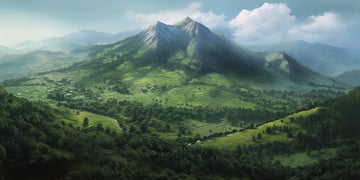
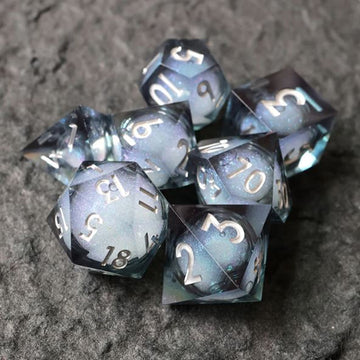
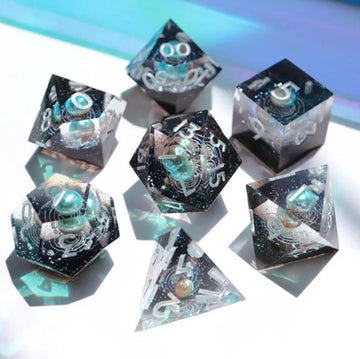
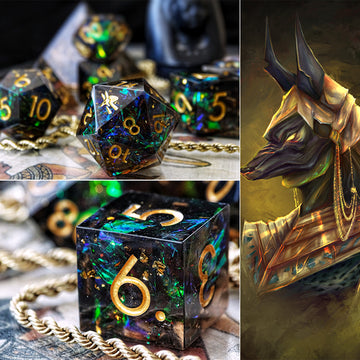
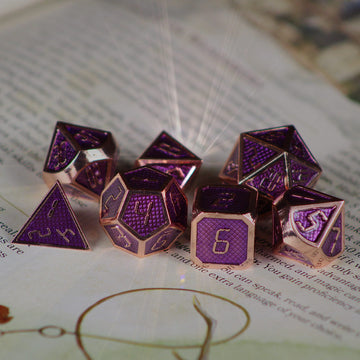
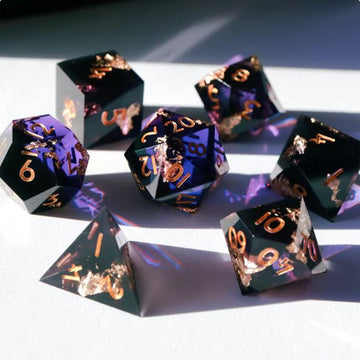
Thanks so much for the shout-out! I’m glad you found something of use on the channel! I’m glad to see folks (re)discovering all the potential that hexcrawls can bring to a campaign. Game on!